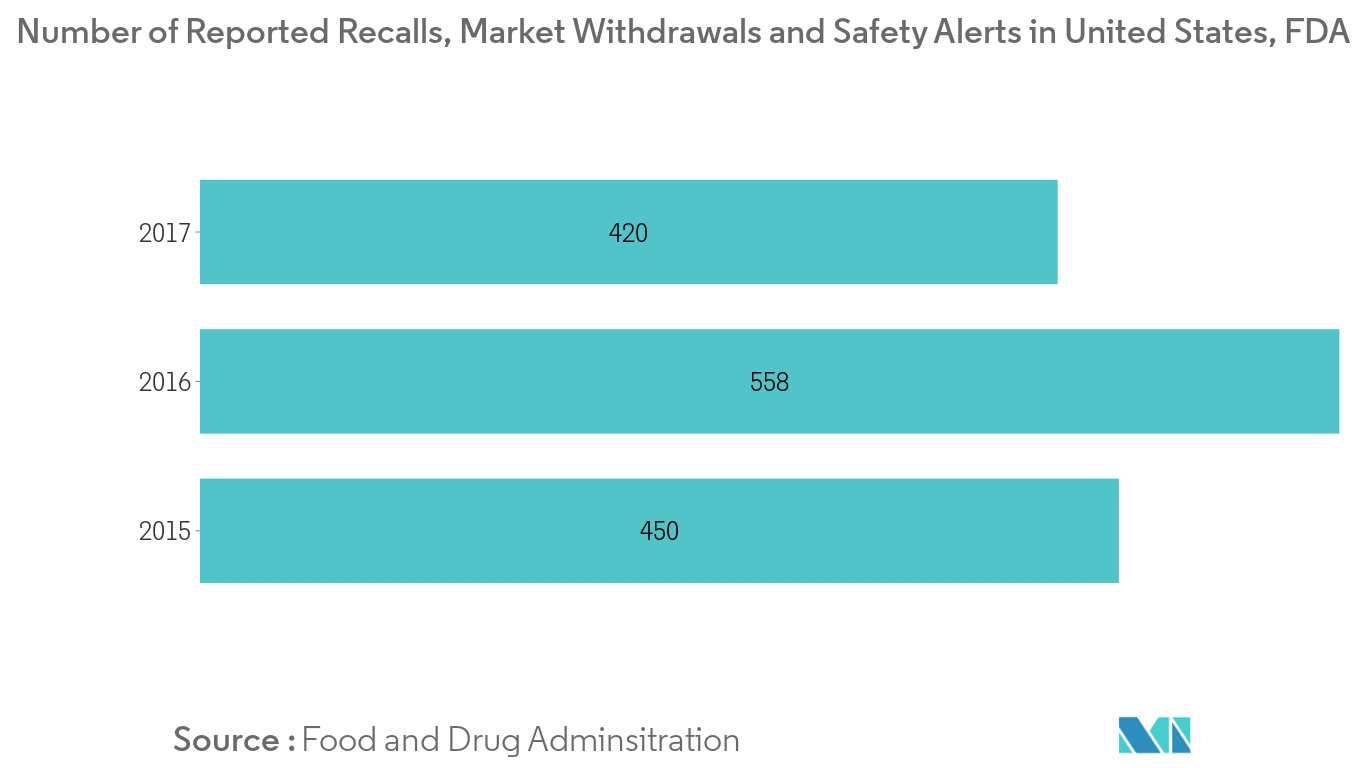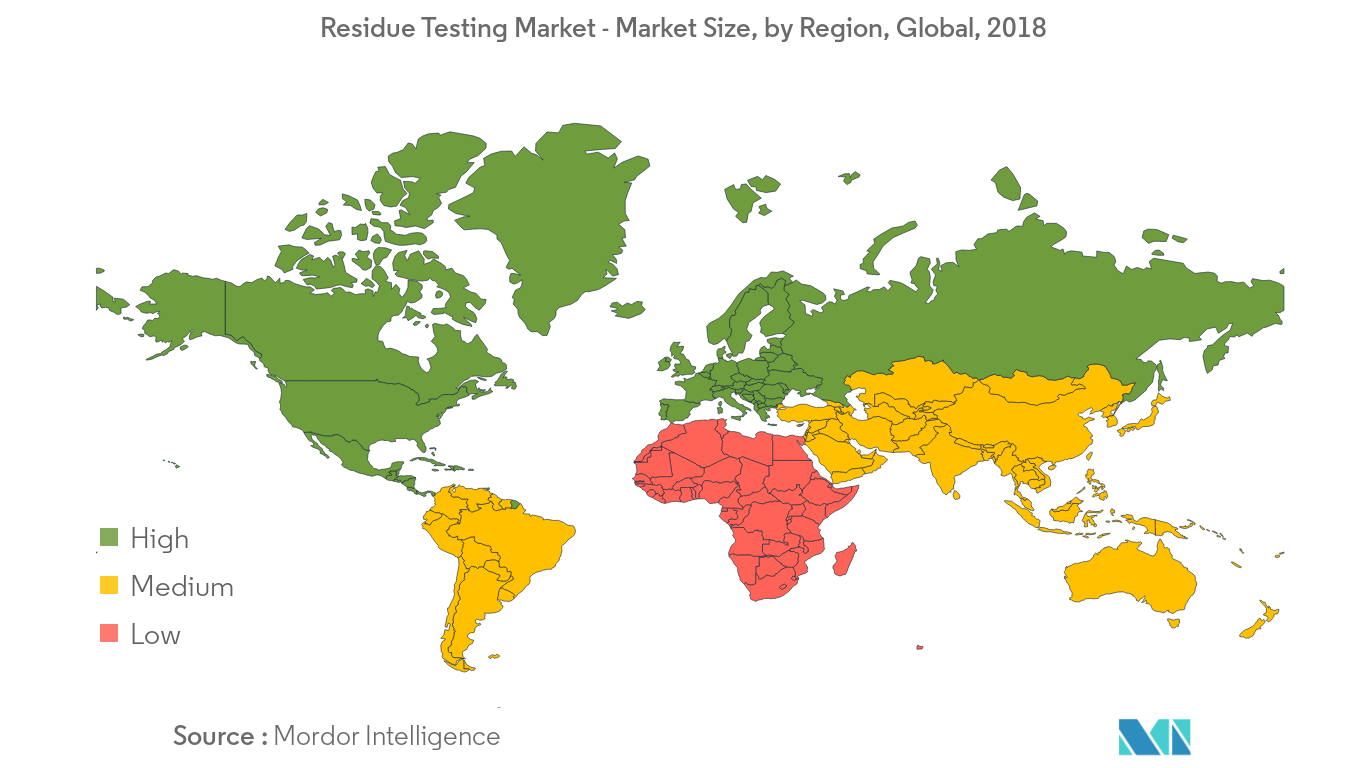Market Trends of Residue Testing Industry
This section covers the major market trends shaping the Residue Testing Market according to our research experts:
Growing Consumer Interest in Food Safety and Quality Issues
The rising number of foodborne disease outbreaks, adulteration cases, and toxicity have increasingly manifested the threat to food safety. The Centre for Disease Control and Prevention (CDCP) has reported that every year, one in 10 people fall sick due to foodborne illness; most importantly, children under five years of age are at high risk. Growing consumer interest for food quality has propelled high technological advancements, which are, thereby, driving the residue safety testing market in developed countries. Enhanced surveillance and detection methods have contributed to the growth of food safety testing scenario, specifically in the developed countries, such as United States. The safety certifications and compliance undertaken by food processing companies and food service organizations are infusing consumer’s trust in these establishments. The consumer education on food safety and mass awareness programs conducted by various bodies are also propelling the market for residue testing.

North America Dominates the Residue Testing Market
The growth of residue testing is primarily driven by the roll-out and implementation of stringent food safety regulations, such as zero tolerance policy for Listeria contamination. The food industries in North America are profoundly impacted by the new Food Safety Modernization Act (FSMA) rules, as consumers are demanding greater transparency regarding food safety. Consumer awareness about chemical tests is also rising, with recent reports of arsenic in apple juice, and acrylamide in processed potatoes and cereals. Companies, such as Eurofins, have developed FDA recommended DNA bar code tests for species identifications, which is gaining prominence in the US market.


